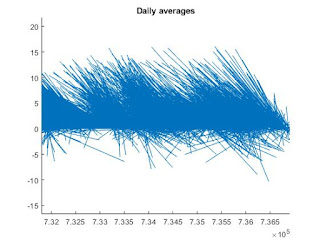Extreme makeover: oyster edition
When I was in high school, there was a show on every Sunday night called Extreme Makeover: Home Edition . I remember watching it with my family as we snacked on popcorn. The premise of the show was simple: a needy family, usually one with a sick child and insufficient resources to afford the necessary accommodations, was sent on vacation while their home was ripped to its studs and remade for free. The family would return home to find a house they didn't recognize, but which finally had the wheelchair access or hospital-quality air filtration their child needed, plus a sunny living room and a landscaped front yard. This week, I couldn't help but remember those evenings of watching another family get a brand-new house, because I just performed my very own extreme makeover. Do you remember the oyster paper? I've been working for over a year to analyze a dataset about swimming behavior in oyster larvae. I have written code , made graphs , and counted the number of times a la
